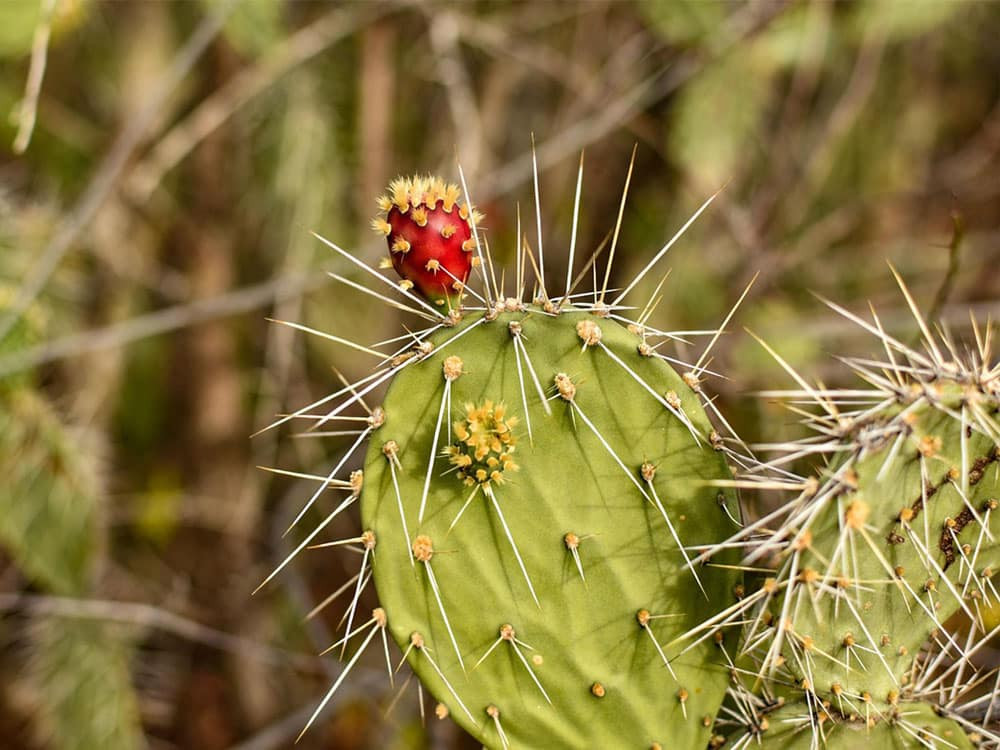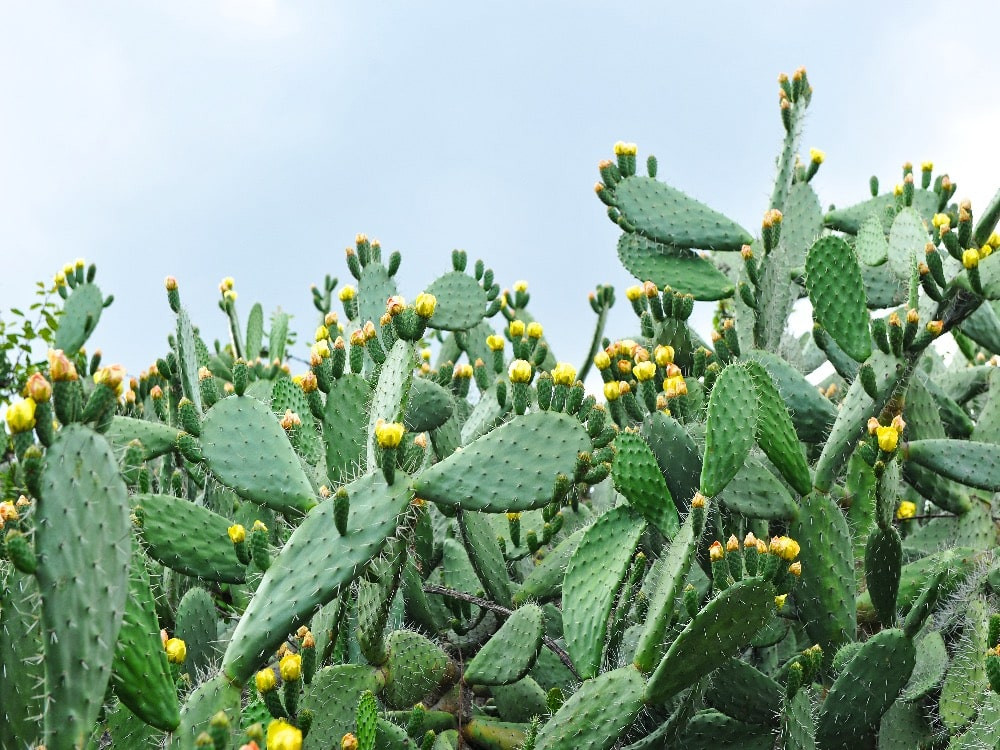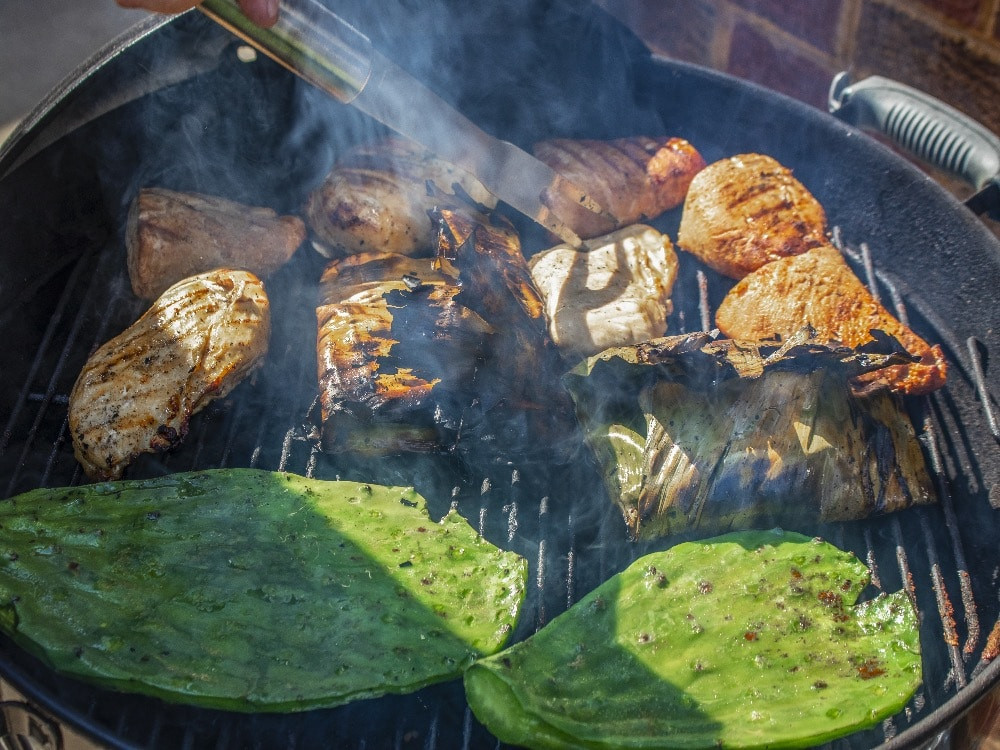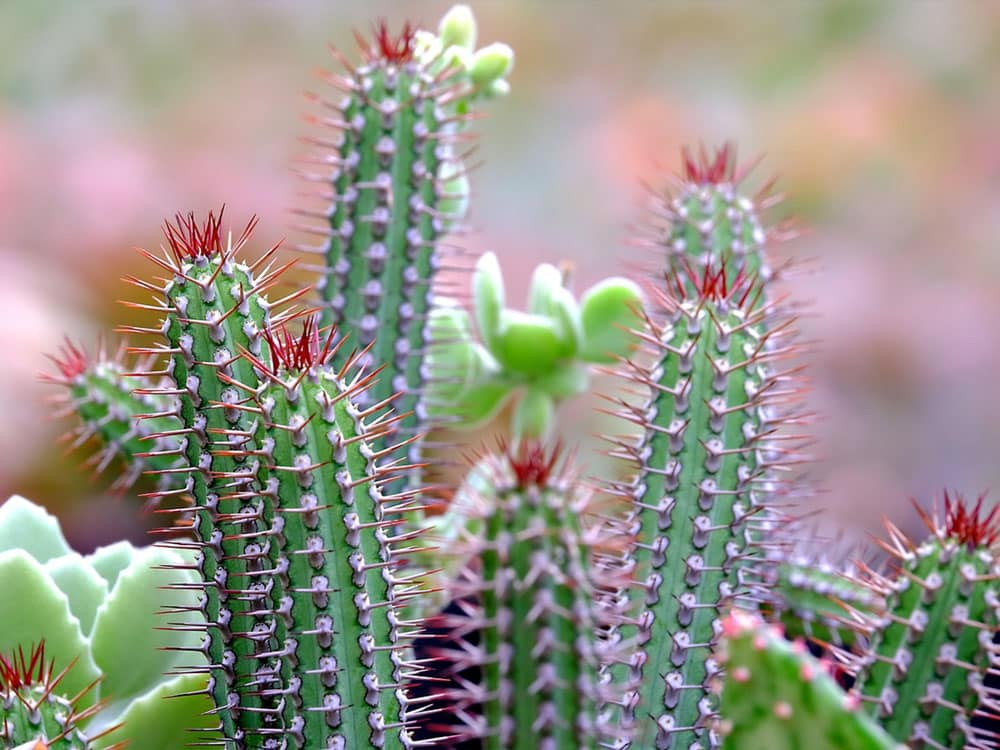Are There Cactus In Mexico? Absolutely! Mexico boasts an incredible variety of cacti, deeply woven into its culture, cuisine, and landscapes, making it a fascinating destination for LGBTQ+ travelers and enthusiasts alike. Join gaymexico.net as we explore the diverse world of Mexican cacti, offering insights and travel tips for an unforgettable and inclusive experience.
1. What Makes Mexico a Cactus Paradise?
Mexico is indeed a cactus paradise due to several unique factors:
- Geographical Diversity: Mexico’s varied landscapes, ranging from arid deserts to semi-tropical regions, create diverse habitats that support a vast array of cactus species.
- Climate: The arid and semi-arid climates prevalent in many parts of Mexico are ideal for cactus growth, allowing them to thrive in challenging conditions.
- Evolutionary History: Mexico is considered a center of origin and diversification for many cactus species, meaning that cacti have evolved and adapted in this region for millions of years.
2. How Many Types of Cactus Are Found in Mexico?
Mexico is home to an astonishing number of cactus species.
| Fact | Detail |
|---|---|
| Estimated Number of Species | Over 600 species, making Mexico one of the most cactus-rich countries in the world. |
| Percentage of Endemic Species | A significant portion of these species are endemic, meaning they are found nowhere else on Earth. |
| Diversity Across Regions | Different regions of Mexico boast unique cactus assemblages, with the northern deserts being particularly rich in species diversity. |
| Ongoing Discoveries | New cactus species are still being discovered in Mexico, highlighting the country’s vast and underexplored biodiversity. |
 Variety of cactus plants
Variety of cactus plants
3. What is the Most Famous Cactus in Mexico?
The most famous cactus in Mexico is arguably the Nopal cactus (Opuntia species).
- Cultural Significance: The Nopal cactus is deeply ingrained in Mexican culture and history.
- Culinary Uses: It is a staple food, widely consumed in various dishes.
- Symbolic Representation: The Nopal cactus is featured on the Mexican flag, symbolizing the founding of Mexico City.
4. Where Can I Find Cactus in Mexico?
You can find cacti throughout Mexico, but certain regions are particularly rich in cactus diversity:
- Deserts: The Chihuahuan Desert and Sonoran Desert in northern Mexico are prime locations for observing a wide variety of cactus species.
- Botanical Gardens: Many botanical gardens across Mexico showcase diverse collections of native cacti.
- National Parks: Protected areas like the Tehuacán-Cuicatlán Biosphere Reserve are home to unique and endangered cactus species.
5. What Are Some Edible Cactus Varieties in Mexico?
Several cactus varieties in Mexico are edible and widely consumed:
- Nopales: The pads of the Nopal cactus are the most commonly eaten cactus.
- Prickly Pears (Tunas): The fruits of various Opuntia species are sweet and delicious.
- Pitaya (Dragon Fruit): While not strictly a cactus, the fruit of the pitaya cactus is also popular.
 Nopal Cactus Pads
Nopal Cactus Pads
6. How is Cactus Used in Mexican Cuisine?
Cactus plays a significant role in Mexican cuisine, offering a unique flavor and texture:
- Nopales: Grilled, boiled, or added to salads, stews, and tacos.
- Prickly Pears: Eaten fresh, made into juices, jams, and candies.
- Other Uses: Cactus flowers and seeds are also used in some traditional dishes.
According to research from the Autonomous University of Chapingo, in January 2024, the demand for cactus in Mexican cuisine continues to rise, with nopales being the most consumed variety.
7. Are There Any Cultural Beliefs Associated with Cactus in Mexico?
Yes, cactus holds significant cultural meaning in Mexico:
- Resilience: Cacti symbolize strength, survival, and adaptation to harsh environments.
- Ancient Traditions: Cacti have been used in traditional medicine and rituals for centuries.
- National Identity: The image of the eagle perched on a cactus devouring a serpent is a powerful symbol of Mexican identity.
8. How Can LGBTQ+ Travelers Experience Cactus in Mexico?
LGBTQ+ travelers can experience cacti in Mexico through various activities:
- Culinary Tours: Sample cactus dishes at LGBTQ+-friendly restaurants and street food stalls.
- Botanical Garden Visits: Explore diverse cactus collections in welcoming environments.
- Hiking and Nature Tours: Discover cacti in their natural habitats with inclusive tour operators.
9. What are the Health Benefits of Eating Cactus?
Eating cactus offers numerous health benefits:
- Rich in Nutrients: Cacti are packed with vitamins, minerals, and antioxidants.
- High in Fiber: Cactus consumption promotes digestive health and helps regulate blood sugar levels.
- Low in Calories: Cacti are a healthy and filling food option for weight management.
| Health Benefit | Description |
|---|---|
| Blood Sugar Control | Cactus fiber helps stabilize blood sugar levels, beneficial for individuals with diabetes. |
| Cholesterol Reduction | Cactus consumption has been linked to lower cholesterol levels, promoting heart health. |
| Antioxidant Properties | Cacti are rich in antioxidants, which help protect against cell damage and chronic diseases. |
10. How Does Cactus Contribute to the Mexican Economy?
Cactus cultivation and harvesting contribute to the Mexican economy in several ways:
- Agriculture: Cactus farming provides livelihoods for many rural communities.
- Food Industry: The processing and sale of cactus products generate significant revenue.
- Tourism: Cactus-related attractions and experiences draw visitors from around the world.
11. What are the Best Times of Year to See Cactus Blooming in Mexico?
The best times to see cacti blooming in Mexico vary depending on the species and region:
- Spring (March-May): Many cactus species flower during this period, particularly after rainfall.
- Summer (June-August): Some cacti bloom during the summer months, especially in higher elevations.
- Fall (September-November): Certain species flower in the fall, adding color to the landscape.
12. What Are Some Lesser-Known Cactus Varieties in Mexico?
While the Nopal cactus is widely known, Mexico is home to many other fascinating cactus varieties:
- Biznaga (Barrel Cactus): These iconic cacti are known for their large size and distinctive shape.
- Organ Pipe Cactus: These tall, columnar cacti resemble organ pipes.
- Peyote: A small, spineless cactus with psychoactive properties, used in traditional ceremonies.
13. How Can I Cook Cactus at Home?
Cooking cactus at home is relatively simple, especially with Nopales:
- Prepare the Nopales: Remove the thorns and spines from the cactus pads.
- Cook the Nopales: Grill, boil, or sauté the nopales until tender.
- Add to Dishes: Incorporate the cooked nopales into tacos, salads, stews, or omelets.
14. Are There Any Cactus-Themed Festivals or Events in Mexico?
Yes, several festivals and events celebrate cactus in Mexico:
- Nopal Festival (Milpa Alta, Mexico City): This annual festival showcases the culinary uses of Nopales.
- Prickly Pear Festival (Various Locations): Celebrates the harvest of prickly pears with food, music, and cultural activities.
15. What Are Some Sustainable Ways to Appreciate Cactus in Mexico?
To appreciate cactus in Mexico sustainably, consider these tips:
- Support Local Communities: Buy cactus products from local farmers and artisans.
- Respect the Environment: Avoid damaging or removing cacti from their natural habitats.
- Choose Eco-Friendly Tours: Opt for tours that promote responsible tourism practices.
16. How Does Climate Change Affect Cactus in Mexico?
Climate change poses a significant threat to cactus populations in Mexico:
- Increased Temperatures: Higher temperatures can lead to water stress and reduced growth.
- Altered Rainfall Patterns: Changes in rainfall can disrupt flowering and seed production.
- Habitat Loss: Climate change can alter habitats, making them unsuitable for certain cactus species.
17. What Conservation Efforts Are in Place to Protect Cactus in Mexico?
Various conservation efforts are underway to protect cactus in Mexico:
- Protected Areas: Establishing and managing national parks and reserves.
- Species Monitoring: Tracking cactus populations and assessing their conservation status.
- Community Engagement: Involving local communities in conservation efforts.
18. How Does Cactus Figure into Mexican Art and Literature?
Cactus has long been a source of inspiration for Mexican artists and writers:
- Symbolic Representation: Cacti often symbolize resilience, strength, and Mexican identity in art and literature.
- Visual Motifs: Cacti are frequently depicted in paintings, sculptures, and other art forms.
- Metaphorical Use: Writers often use cacti as metaphors for survival, adaptation, and the harsh realities of life.
 Cactus on BBQ
Cactus on BBQ
19. Are There Any Cactus Gardens or Nurseries That LGBTQ+ Travelers Can Visit?
Yes, there are several cactus gardens and nurseries in Mexico that welcome LGBTQ+ travelers:
- Ethnobotanical Garden of Oaxaca: Features a diverse collection of native plants, including many cacti.
- Cactus Nurseries in Northern Mexico: Offer a wide variety of cacti for sale and provide information about their cultivation.
- Private Gardens: Some private gardens may be open to the public or offer tours, providing a more intimate experience.
20. What Should I Wear When Exploring Cactus-Filled Areas in Mexico?
When exploring cactus-filled areas in Mexico, it’s essential to dress appropriately:
- Long Pants: To protect your legs from scratches and thorns.
- Closed-Toe Shoes: Sturdy shoes are essential for walking on uneven terrain.
- Wide-Brimmed Hat: To shield yourself from the sun.
- Sunscreen: To protect your skin from harmful UV rays.
21. How Can I Learn More About Cactus in Mexico?
To learn more about cactus in Mexico, consider these resources:
- Books: Field guides and botanical texts on Mexican cacti.
- Websites: Online databases and resources from botanical organizations.
- Museums: Natural history museums with exhibits on Mexican flora.
22. Are There Any Traditional Uses of Cactus in Mexican Medicine?
Yes, cactus has a long history of use in traditional Mexican medicine:
- Wound Healing: Cactus pulp is used to treat cuts, burns, and other wounds.
- Digestive Aid: Cactus is believed to aid digestion and relieve constipation.
- Anti-Inflammatory: Some cactus species have anti-inflammatory properties.
23. How Can I Respect Local Customs When Interacting with Cactus in Mexico?
When interacting with cactus in Mexico, it’s essential to respect local customs:
- Ask Permission: Before touching or photographing cacti on private property.
- Avoid Overharvesting: Only collect cactus products from sustainable sources.
- Learn About Cultural Significance: Understand the cultural importance of cacti to local communities.
24. What Are Some Day Trips from Major Cities to See Cactus in Mexico?
Several day trips from major cities in Mexico offer opportunities to see cacti:
- From Mexico City: Visit the Tehuacán-Cuicatlán Biosphere Reserve.
- From Guadalajara: Explore the cactus-filled landscapes near Lake Chapala.
- From Monterrey: Hike in the Sierra Madre Oriental mountains to see diverse cactus species.
25. How Does Cactus Contribute to Biodiversity in Mexico?
Cactus plays a vital role in maintaining biodiversity in Mexico:
- Habitat Provision: Cacti provide shelter and nesting sites for various animals.
- Food Source: Cactus fruits and pads are a food source for birds, mammals, and insects.
- Ecosystem Stability: Cacti help stabilize soil and prevent erosion in arid environments.
26. Are There Any Legal Restrictions on Collecting Cactus in Mexico?
Yes, there are legal restrictions on collecting cactus in Mexico:
- Protected Species: Many cactus species are protected by law, and collecting them is prohibited.
- Permits: Permits may be required for scientific research or commercial harvesting of certain species.
- Enforcement: Authorities actively enforce these regulations to protect cactus populations.
27. How Can I Take Great Photos of Cactus in Mexico?
To capture stunning photos of cactus in Mexico, consider these tips:
- Golden Hour: Shoot during the early morning or late afternoon for soft, warm light.
- Composition: Use leading lines, framing, and the rule of thirds to create visually appealing images.
- Focus: Pay attention to focus and depth of field to highlight the details of the cacti.
28. What Role Does Cactus Play in the Mexican Economy?
Cactus plays a significant role in the Mexican economy through:
- Agriculture: Cultivation of nopales and other edible cacti.
- Tourism: Cactus-themed attractions and experiences.
- Export: Export of cactus products to other countries.
*According to the Ministry of Agriculture and Rural Development, in April 2024, cactus cultivation contributes significantly to the income of many rural families in Mexico.
29. Are There Any Endangered Cactus Species in Mexico?
Yes, several cactus species in Mexico are endangered due to:
- Habitat Loss: Conversion of land for agriculture and development.
- Overcollection: Illegal harvesting for the ornamental plant trade.
- Climate Change: Altered rainfall patterns and increased temperatures.
30. How Can I Support Cactus Conservation Efforts in Mexico?
You can support cactus conservation efforts in Mexico by:
- Donating to Conservation Organizations: Supporting organizations that work to protect cactus habitats.
- Volunteering: Participating in conservation projects and activities.
- Raising Awareness: Educating others about the importance of cactus conservation.
31. Can I Visit Cactus Farms in Mexico?
Yes, visiting cactus farms in Mexico can be an interesting experience, especially those that focus on sustainable practices:
- Nopal Farms: Some farms offer tours and demonstrations of Nopal cultivation.
- Prickly Pear Orchards: Learn about the cultivation and harvesting of prickly pears.
- Organic Farms: Support farms that use organic and sustainable farming methods.
32. How Does the Mexican Government Protect Cactus?
The Mexican government protects cactus through:
- Legislation: Laws that regulate the collection and trade of cactus species.
- Protected Areas: Establishing and managing national parks and reserves.
- Enforcement: Monitoring and enforcing regulations to prevent illegal activities.
33. What Are Some Common Pests and Diseases Affecting Cactus in Mexico?
Cactus in Mexico can be affected by various pests and diseases:
- Cochineal: A scale insect that feeds on cactus pads.
- Fungal Infections: Can cause rot and decay in cacti.
- Viral Diseases: Can stunt growth and cause discoloration.
34. How Do Indigenous Communities Use Cactus in Mexico?
Indigenous communities in Mexico have a long history of using cactus for various purposes:
- Food: As a staple food source.
- Medicine: For treating various ailments.
- Construction: Using cactus parts for building materials.
- Crafts: Making baskets, mats, and other items from cactus fibers.
 Mexican Cactus
Mexican Cactus
35. What Are the Best Souvenirs to Buy That Feature Cactus?
When looking for souvenirs featuring cactus, consider these options:
- Cactus Candy: Made from prickly pears or other cactus fruits.
- Cactus Art: Paintings, sculptures, and ceramics featuring cactus motifs.
- Cactus Products: Soaps, lotions, and other beauty products made from cactus extracts.
36. How Does Cactus Adapt to Survive in Harsh Environments?
Cactus has evolved numerous adaptations to survive in harsh environments:
- Water Storage: Fleshy stems and leaves store water.
- Reduced Leaves: Spines reduce water loss and protect against herbivores.
- Deep Roots: Help access water deep underground.
- Waxy Coating: Reduces water evaporation from the surface.
37. What is the Difference Between a Cactus and a Succulent?
While all cacti are succulents, not all succulents are cacti:
- Cactus: A type of succulent that has areoles, specialized structures from which spines, flowers, and new growth emerge.
- Succulent: A plant that stores water in its leaves, stems, or roots.
38. How Does Cactus Help Prevent Soil Erosion in Mexico?
Cactus helps prevent soil erosion in Mexico by:
- Root Systems: Stabilizing the soil with their extensive root systems.
- Ground Cover: Providing ground cover that reduces the impact of rainfall.
- Windbreak: Acting as a windbreak that reduces wind erosion.
39. Can I Grow Cactus at Home If I Don’t Live in a Desert Climate?
Yes, you can grow cactus at home even if you don’t live in a desert climate:
- Choose the Right Species: Select cacti that are adapted to indoor conditions.
- Provide Adequate Light: Cacti need plenty of sunlight.
- Use Well-Draining Soil: Cactus needs well-draining soil to prevent root rot.
- Water Sparingly: Overwatering is a common mistake when growing cacti indoors.
40. What Resources Does Gaymexico.Net Offer for LGBTQ+ Travelers Interested in Exploring Mexico?
Gaymexico.net offers a wealth of resources for LGBTQ+ travelers interested in exploring Mexico:
- Travel Guides: Detailed guides to LGBTQ+-friendly destinations in Mexico.
- Event Listings: Information on LGBTQ+ events, festivals, and parties.
- Community Forums: A platform for connecting with other LGBTQ+ travelers and locals.
- Safety Tips: Advice on staying safe and enjoying your trip to Mexico.
Explore the spiny wonders of Mexico with confidence and pride! Visit gaymexico.net today to discover LGBTQ+-friendly destinations, events, and community connections that will make your trip unforgettable.
Address: 3255 Wilshire Blvd, Los Angeles, CA 90010, United States. Phone: +1 (213) 380-2177. Website: gaymexico.net.